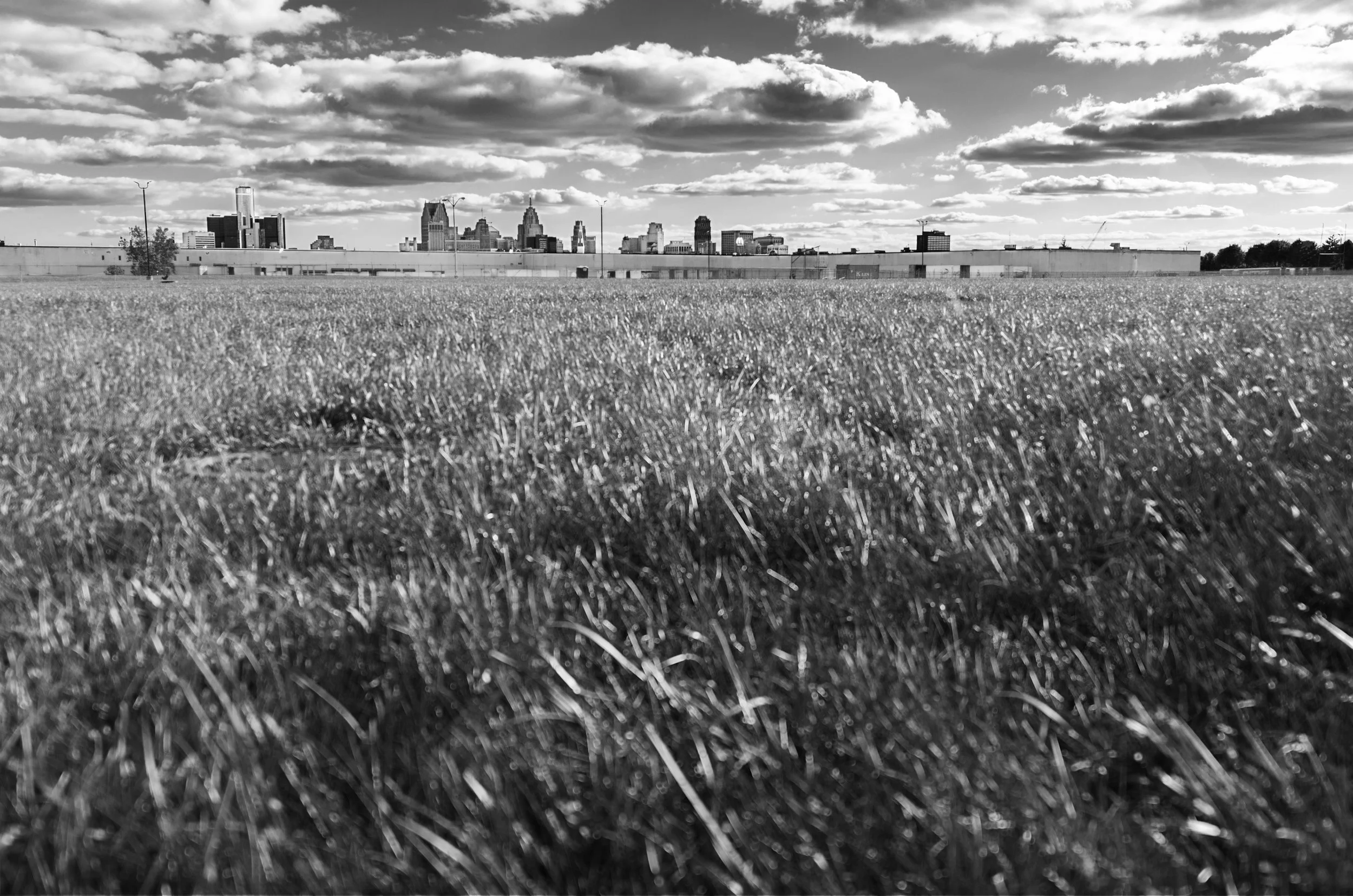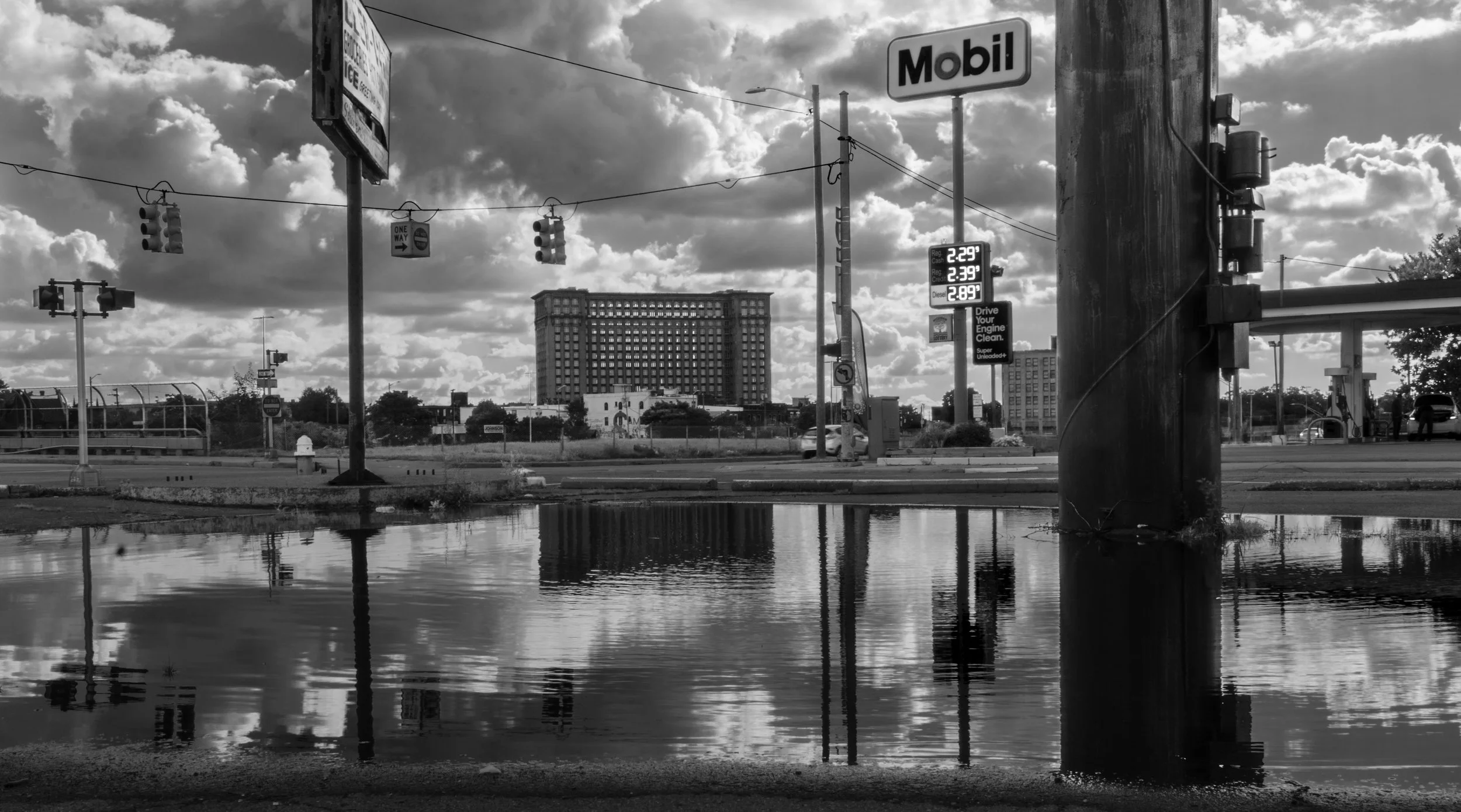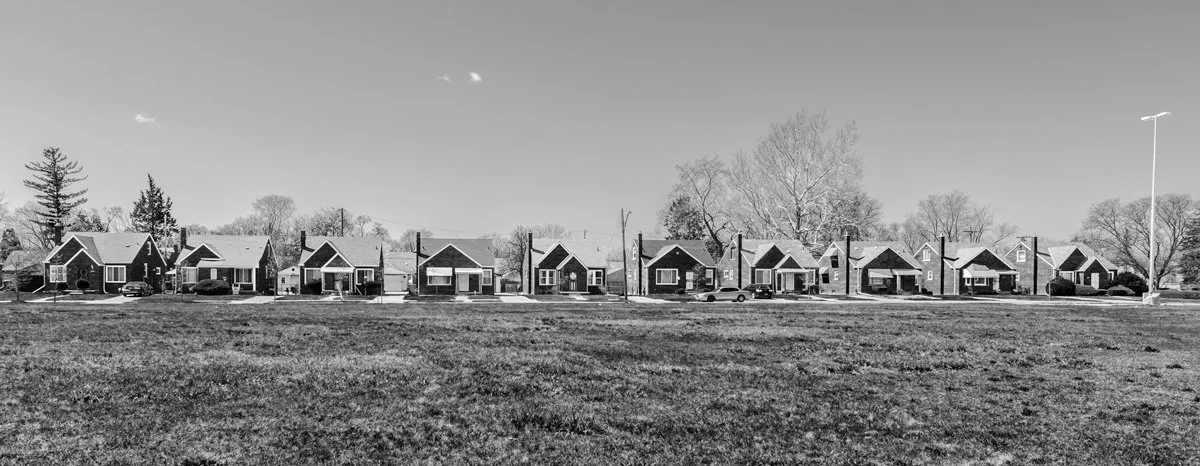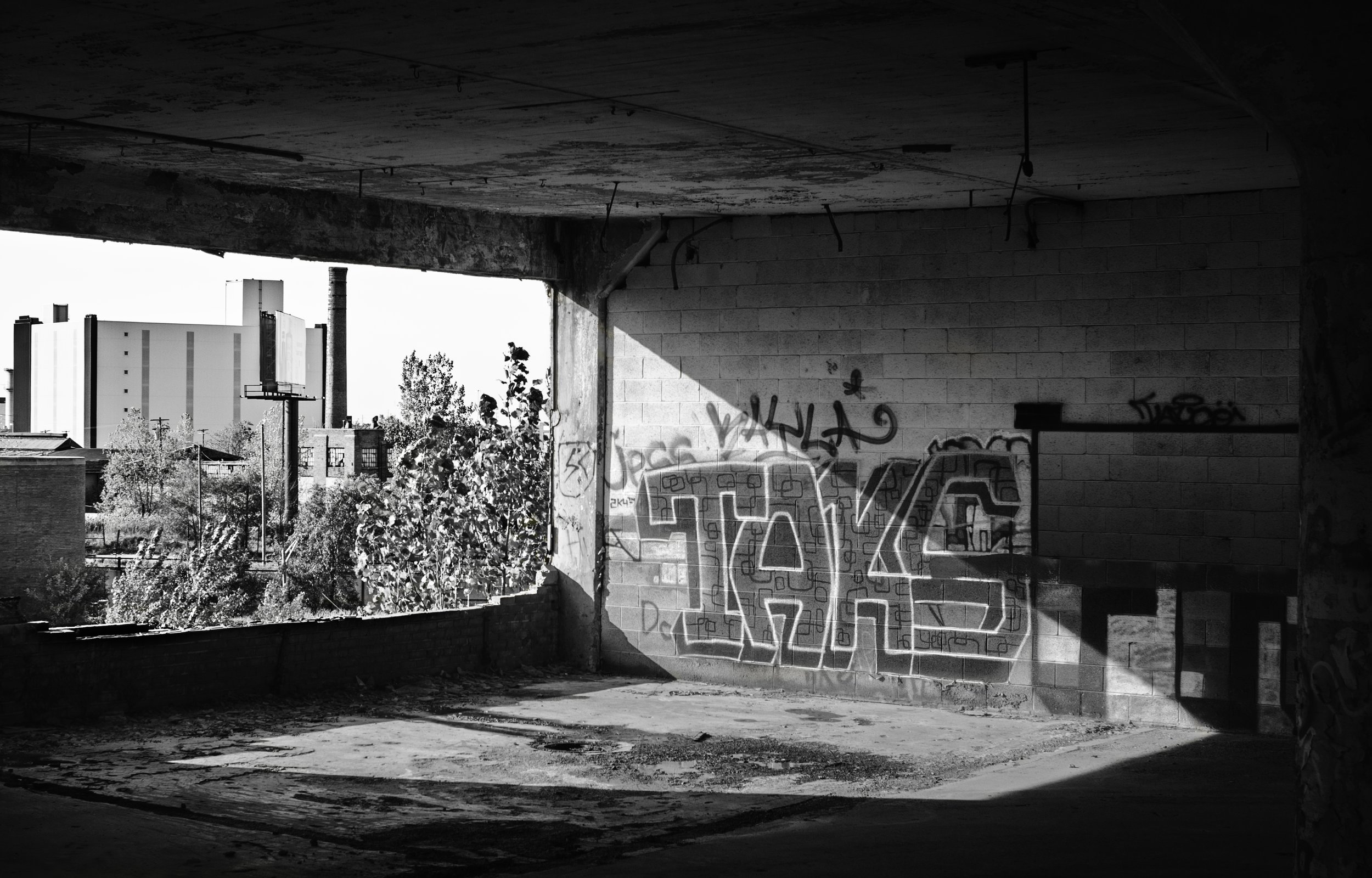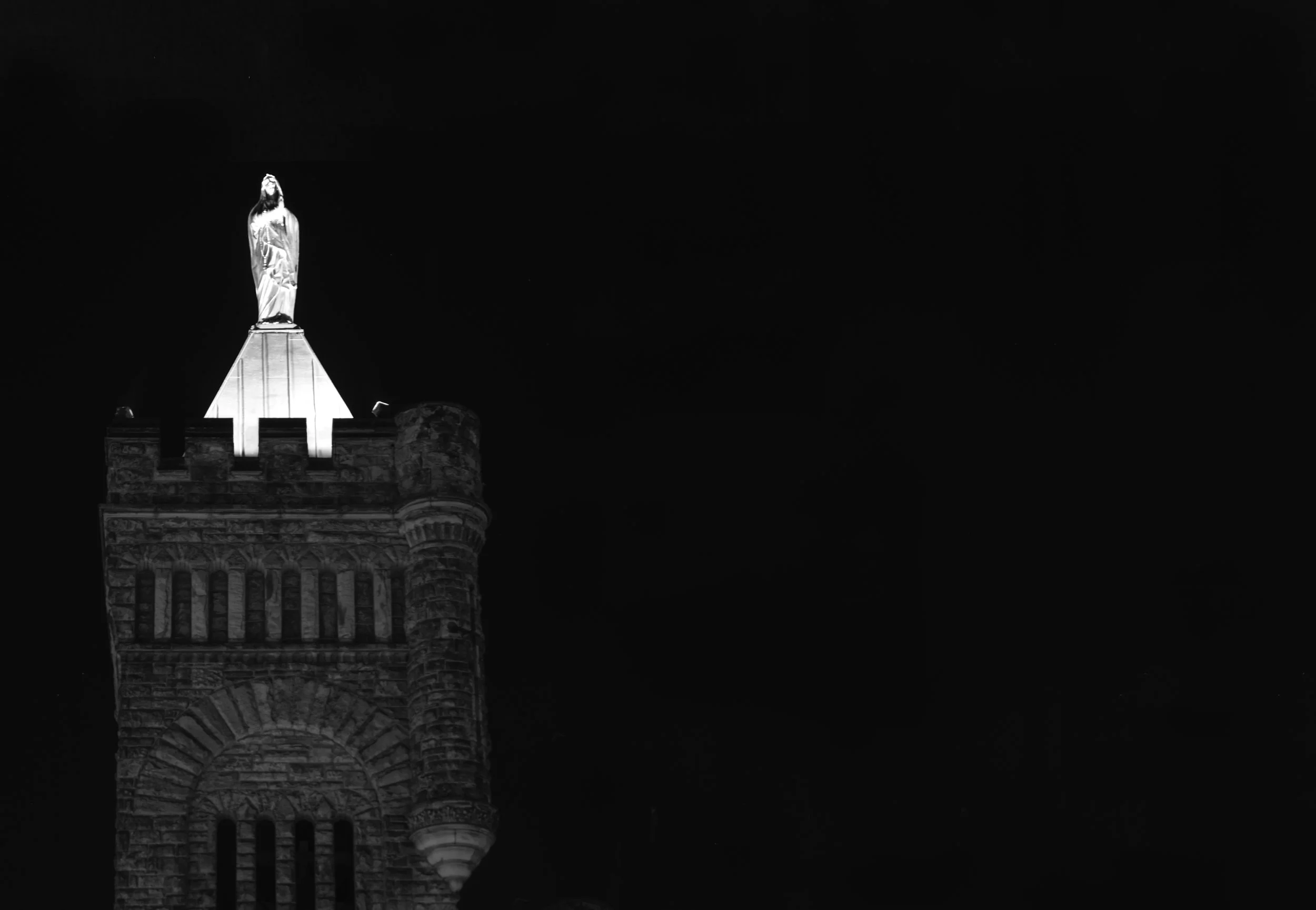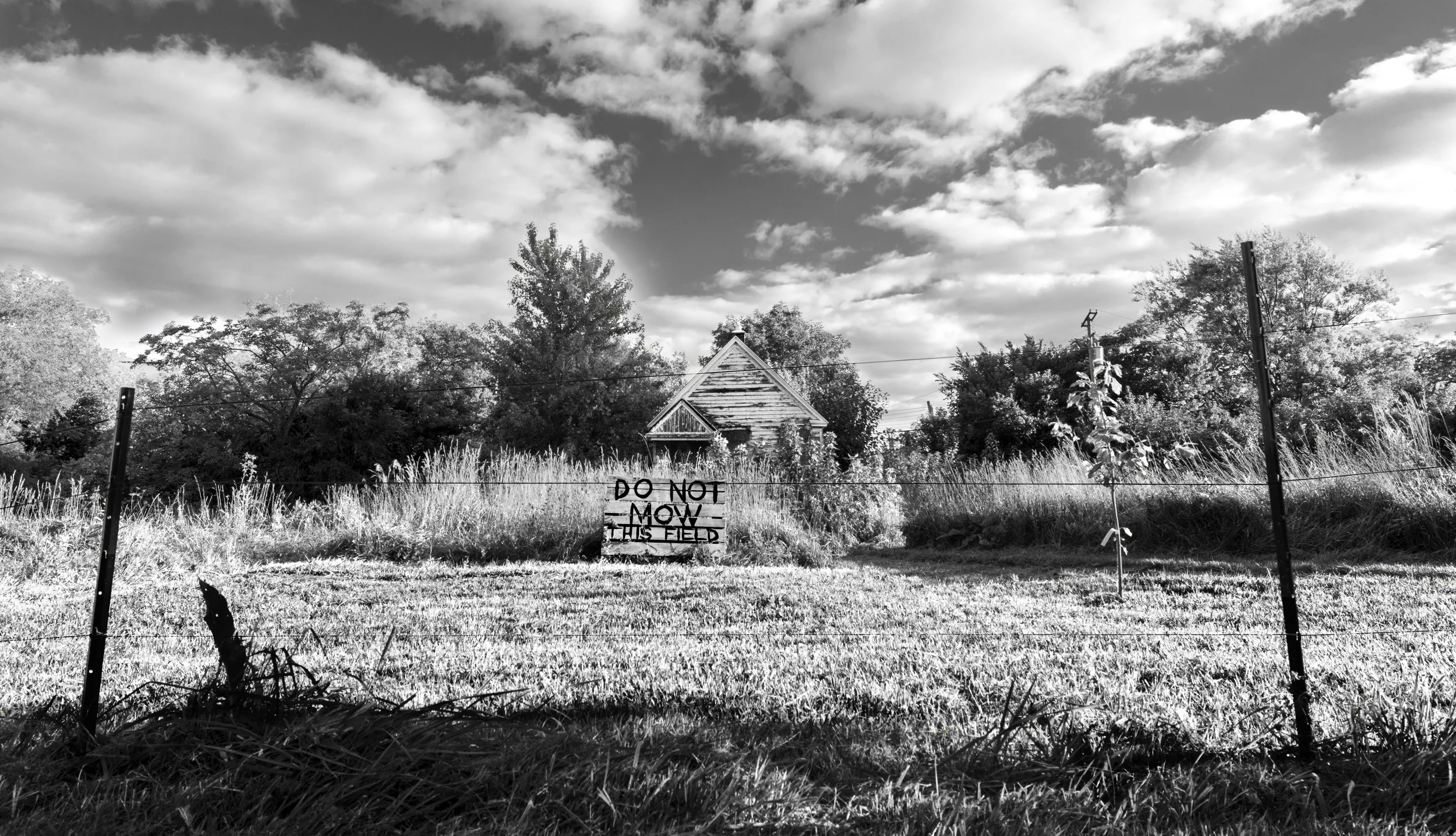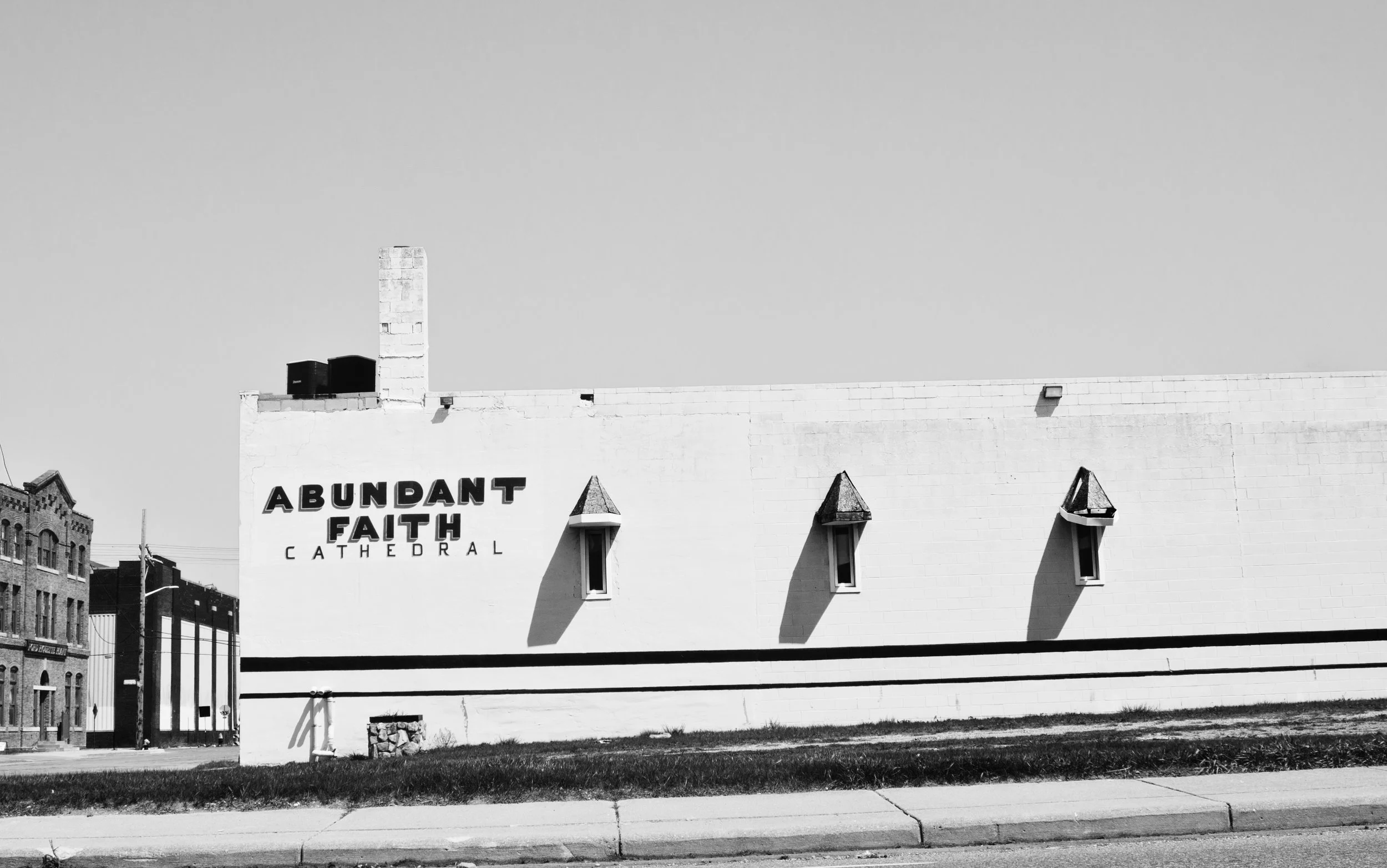Detroit/Torino: A Tale of Two Cities
Detroit and Torino are (former) capitals of the automotive industry, and centers of aesthetic and social modernization in their respective countries.
Despite their profound, inevitable diferences, they show, at times, uncanny similarities.
1. Motown
I drove for several years through Detroit’s neighbourhoods, got out of my car (except when, because of the cold,
I set up my tripod on the street, lowered the window, and used a remote control to take an image!), and tried
to understand the city’s spirit of place, which, I decided, lay in its endless horizontality, the vast expanse of
reclaimed “prairies”, abandoned blocks of houses and stores, which stretch for miles, and collapsing giant
factories, human-made dinosaurs, often makeshift dwellings for homeless people, interrupted only by soaring
churches and downtown skyscrapers, visible from so many points of the urban setting. But downtown is a remote
presence, a distant “shining city on the hill” with its elusive promise of excess, wealth and glory.
My journey is also a journey of encounters with local residents. We shared the empty streets, the lack of
companions, thepleasure in communicating with another human being. One day I will record in writing
the surreal conversations I had with those who lived through Detroit’s growth, decay and (partial) rebirth.
Only a surrealist can have survived so many decades of desertion. I loved them all.
Motown (Detroit’s nickname, taken from the Motown popular music label) thus became a black and white
modernist project, my view and experience of Detroit as a flaneur, the city stroller which is inseparable,
for us, from the modern city.

